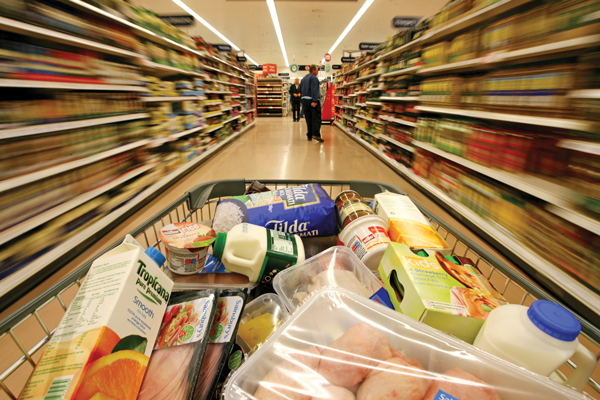Retail
A struggling Irish retail sector is one of two in the EU 27 to record an annual decrease in retail volume. However, slight increases occurred in department stores and electrical goods. eolas reports.
Retail value has fallen by 76 per cent from 116 in 2007 to 88.5 in 2011. Volume has fallen by 81 per cent from 114.2 to
93.1 over the same period, according to the CSO’s retail sales index (updated on 27 February 2012). Value and volume are measured against a 2005 baseline of 100.
The sector currently accounts for approximately 23 per cent (€37 billion) of Ireland’s GDP of €161 billion. 262,000 people were employed in the retail sector from October to December 2011, a decrease from 265,600 in October to December 2009.
The key problem facing the sector is falling demand as the public try to save money. Retailers have responded by cutting their prices, while the cost of running a shop has not fallen in comparison due to fixed or increasing rents and property charges.
According to opposition TDs, decline in the retail sector has been exacerbated by the EU-IMF memorandum of understanding’s commitment to increase VAT by 2 per cent (1 per cent in 2013 and 1 per cent in 2014).
Retailers “believe the 2 per cent increase in VAT had a detrimental impact on consumer sentiment and job creation in the domestic economy,” Micheál Martin told the Dáil on 27 March. “They also want commercial rates to be reduced to give them breathing space,” he said.
In his Budget statement, Michael Noonan said that VAT will not be increased beyond the current rate of 23 per cent. He did not expect an increase in cross-border shopping as a result of the VAT difference with the North, which is now 3 per cent.
A Bill to reform the costly joint labour committee system, allowing JLCs to set a basic adult wage rate and two additional higher rates and forbidding JLCs to set Sunday premium rates, is currently at committee stage. Enterprise Minister Richard Bruton has said that the changes would “strike a balance between protecting vulnerable workers and providing reforms that would make the systems more competitive and more flexible so as to allow for the creation of jobs.”
Most recent statistics for February 2012 show that the value of retail sales decreased by 0.1 per cent that month compared to January and there was an annual decrease of 1.8 per cent. The volume of retail sales decreased by 0.3 per cent over the same period and there was an annual decrease of 1.9 per cent.
Motor trades accounted for 60.2 on the value of sales index and 65.6 on the volume of sales index in February. The value of motor trade sales decreased by 4.1 per cent in the past year and its volume of sales was down 3.4 per cent.
Since January 2012, monthly decreases were recorded in bars (3.3 per cent), books, newspapers and stationery (3.2 per cent), motor trades (2.9 per cent) and furniture and lighting (2.2 per cent). Increases were recorded in department stores (8.5 per cent), electrical goods
(6.3 per cent) and other retail sales (5.3 per cent).
The value of fuel sales, from February 2011 to February 2012, increased slightly by 0.9 per cent, but the volume of sales dropped by 6.6 per cent. Sales of pharmaceuticals, medical and cosmetics (which formed 28 per cent of Ireland’s 2011 exports) were up by 2.7 per cent and their value increased by 1.6 per cent over the year.
Ireland’s volume of retail trade decreased by 2.4 per cent since January 2011, the biggest decrease of all 27 EU member states. A small decrease of 0.6 per cent was recorded in Sweden. The average percentage change for the EU 27 was 4.4 per cent. The highest percentage annual change was in Latvia (10.5 per cent), followed by Lithuania (9.2 per cent) and Cyprus (8.7 per cent).






